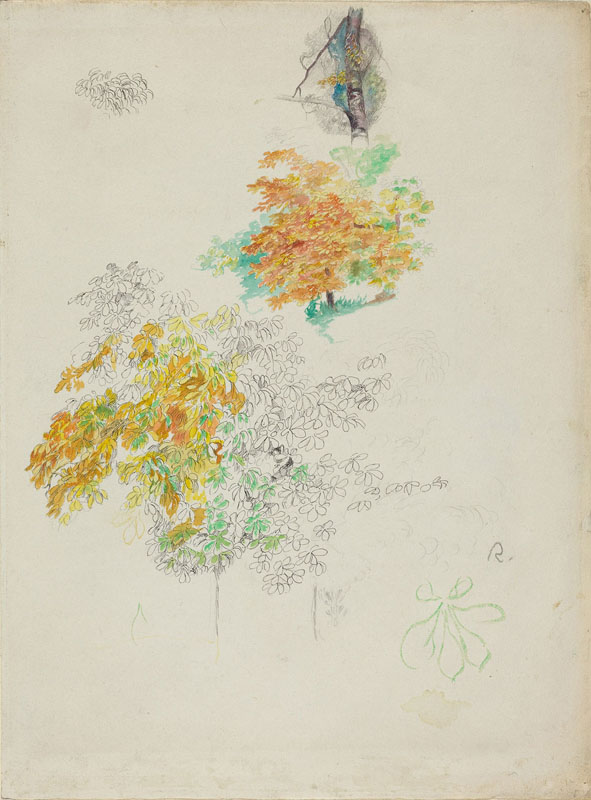Listen to co-curator Sarah Lees discuss Renoir’s watercolor landscape studies

Studies of Trees, 1886
Pen and black ink, watercolor, and graphite
National Gallery of Art, Washington, DC, gift of Dr. and Mrs. George Baer, in honor of the 50th anniversary of the National Gallery of Art, 1990; 1990.94.1
Image courtesy National Gallery of Art, Washington.
Renoir made this carefully detailed drawing in a sketchbook as he sat outdoors studying a tree, perhaps in the late summer when some of the leaves had begun to turn yellow and gold. One vignette gives an overall view of the tree, the next zooms in for a closer look at the foliage, some of which is simply outlined in pen and ink, and several other sketches focus in even more closely, capturing the dark, glimmering quality of the bark and the characteristic profile of a single, multi-lobed leaf outlined in green. Renoir used this technique of creating graphite or pen and ink outlines which he then filled in with watercolor primarily in the mid-1880s, when he wanted to follow more rigorous drawing practices. Such sketches served as notations that he could execute relatively quickly on the site and then take back to his studio for future reference. As he wrote in a letter to his dealer Paul Durand-Ruel in August 1886, when he was staying in Brittany for the summer: “I have some fine things here to work on until the end of September, but I’m making drawings and watercolors so that there will be no shortage of material for me to use this winter.” Many of his watercolors of the later 1880s— several of which are displayed nearby—are executed with broader, more fluid handling, often depicting an overall view of a site. When a group of these various watercolors was exhibited in Paris in 1921, one critic described Renoir’s technique as taking “multiple repeated touches, woven together, to obtain stunning vibrations. ... With such a limited range [of colors] he achieves the rarest of harmonies”— an apt description of the artist’s light- and color-filled landscape drawings.
